Most mid-size cars fail new side crash test instituted by the IIHS
Mid-size cars don’t hold up as well as crossover SUVs in a new side impact test conducted by the IIHS, the insurance industry-funded nonprofit announced Thursday.
Only the 2022 Subaru Outback earned a top “Good” rating in a new crash test meant to reflect what happens when a car gets hit on the driver’s side by a heavier vehicle at high speeds. The 2022 Hyundai Sonata and 2022 Volkswagen Jetta earned “Acceptable” ratings, due to more severe impacts on the driver’s pelvis and rear passenger’s torso or pelvis.
The 2022 Honda Accord earned a “Marginal” rating, due to an elevated risk of impact on the driver’s head. The 2022 Toyota Camry, 2022 Nissan Altima, and 2022 Chevrolet Malibu all earned “Poor” ratings for a higher risk of intrusion into the cabin, and higher risk of injury.
In tests of small and mid-size crossover SUVs, 10 out of 18 SUVs earned “Good” ratings; none earned “Poor” ratings.
“With vehicles that sit lower to the ground, the striking barrier hits higher on the door panel,” IIHS President David Harkey said in a statement. “That potentially puts sedans and wagons at a disadvantage in this evaluation but reflects what happens in a real-world crash when these vehicles are struck by a higher-riding pickup or SUV.”
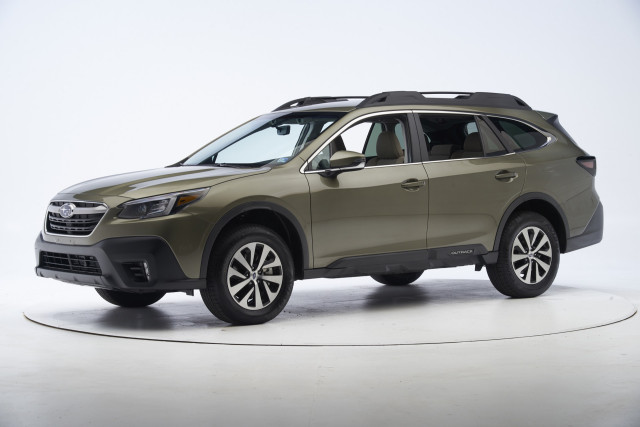
The 2022 Subaru Outback rates
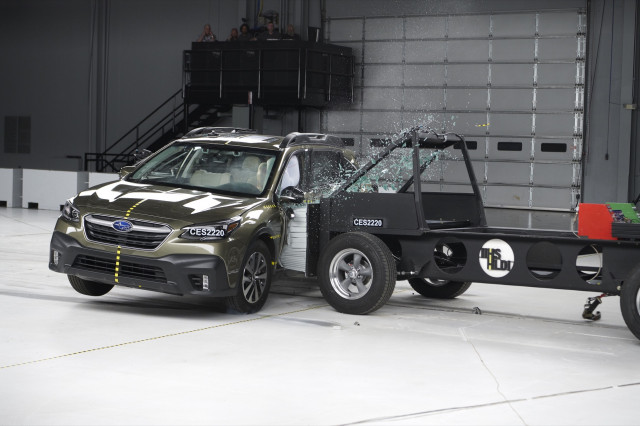
The 2022 Subaru Outback rates
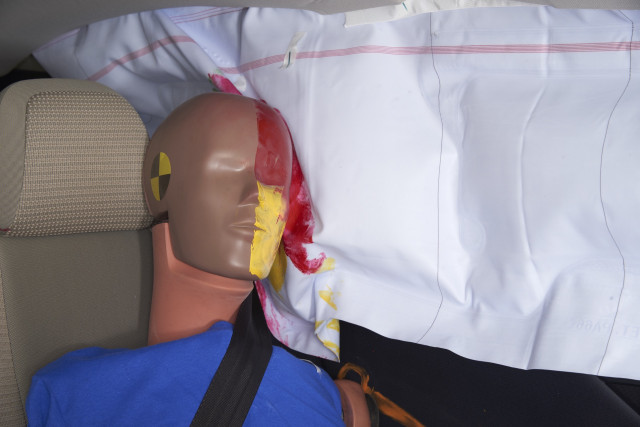
The 2022 Subaru Outback rates
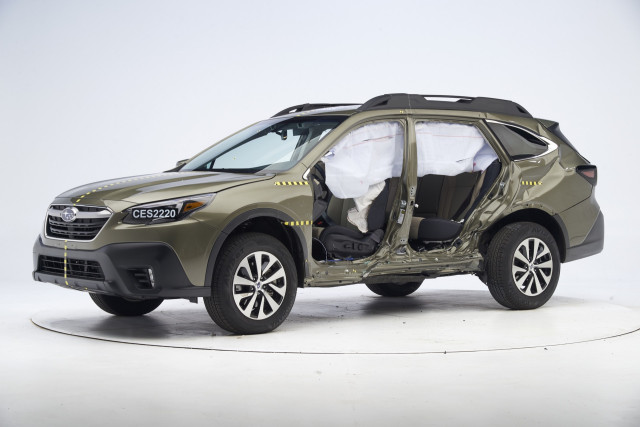
The 2022 Subaru Outback rates
The new crash test reflects how much roadways have changed in 20 years. It’s the first update to its side-impact test since 2003. During that time, the marketplace has shifted overwhelmingly to large vehicles that ride higher and weigh more than sedans. Additionally, vehicles are traveling at higher speeds on average than in the past.
This adds up to more dangerous circumstances for drivers. Of the more than 36,000 traffic fatalities that occurred in 2019, the last complete year for data from the U.S. Department of Transportation’s Fatality Analysis Reporting System, nearly 8,300 people (23%) died from side impact crashes.
The new test, meant to simulate a T-bone crash such as when a car turns left at a light and gets struck by another car traveling perpendicular through the intersection, addresses these changes to reflect SUVs and larger vehicles.
“The average weight of SUVs on the road has increased about 1,000 lb over the last 20 years to about 4,600 lb,” Joe Young, IIHS director of public relations, said in an interview conducted in October when the new testing was announced. “The new barrier weighs 4,180 lb, which is about in line with the average weight of a mid-size SUV.”
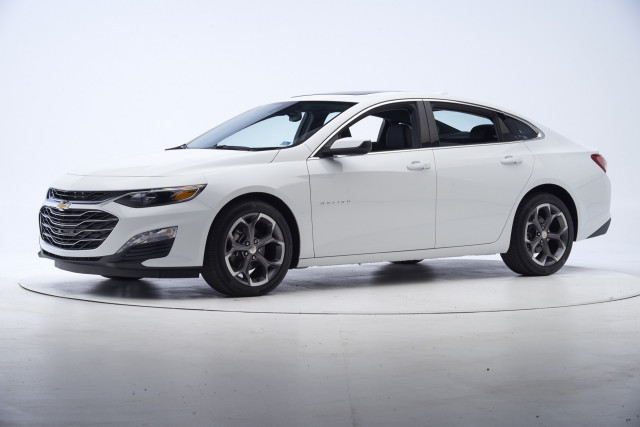
The 2022 Chevy Malibu rates
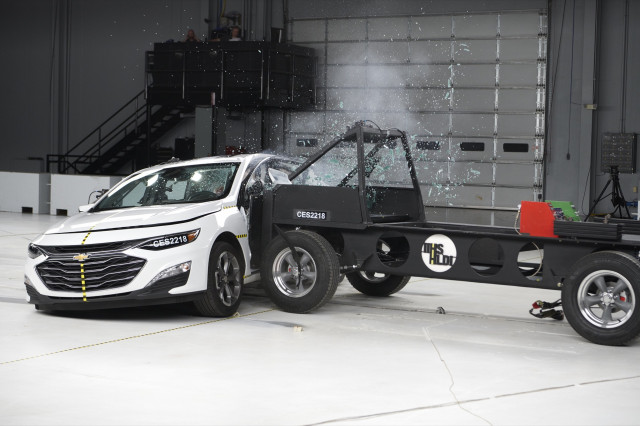
The 2022 Chevy Malibu rates

The 2022 Chevy Malibu rates
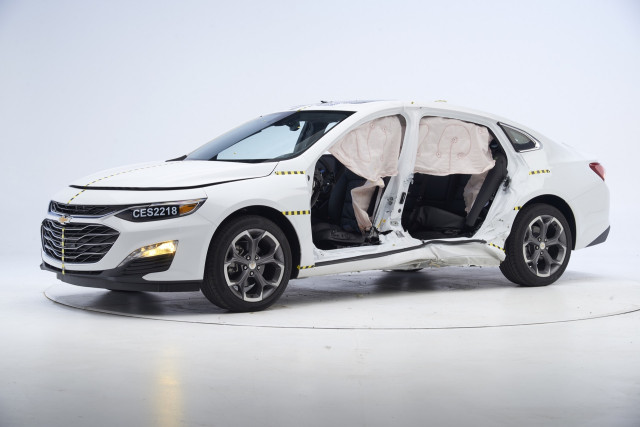
The 2022 Chevy Malibu rates
The original test had a 3,300-lb barrier striking the car’s B-pillar at 31 mph. The new test uses the heavier barrier and a strike speed of 37 mph. The IIHS also reshaped the barrier strike surface for a lower point to reflect that SUVs have lower car-like hoods. The barrier hits the B-pillar that separates the front and rear seats externally, and the dummies used in both of those seats are modeled after the proportions of a small woman or 12-year-old passenger. The driver’s side is used instead of the passenger’s side because there will always be a driver.
The new test also reflects a higher standard of safety. The IIHS raises the safety bar and criteria for its Top Safety Pick (TSP) awards, which are coveted by automakers as a marketing tool to demonstrate vehicle safety as much if not more so than the NHTSA’s outdated five-star crash-test rating system. In 2021, 93% of vehicles tested earned a top “Good” rating in the side impact test, which is one of six crash tests conducted by the IIHS and used in part in its TSP and TSP+ criteria.
All seven mid-size cars tested earned a “Good” rating in the original side-impact test.
Recent safety changes have accounted for headlight effectiveness as well as the performance of automatic emergency braking. Automakers respond to those changes to try and earn TSP nods.
Starting in 2023, a “Good” or “Acceptable” rating in the new side-impact test will be necessary to earn a TSP, while a “Good” rating will be required for a TSP+.

